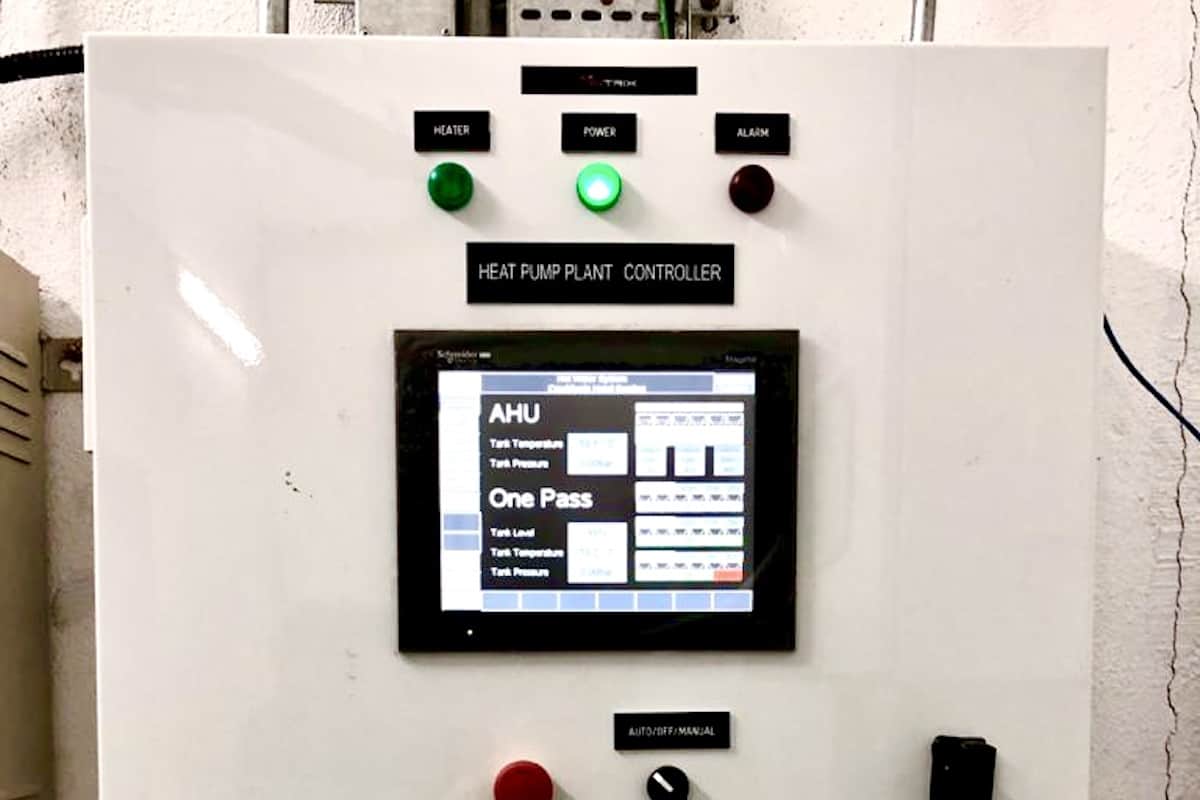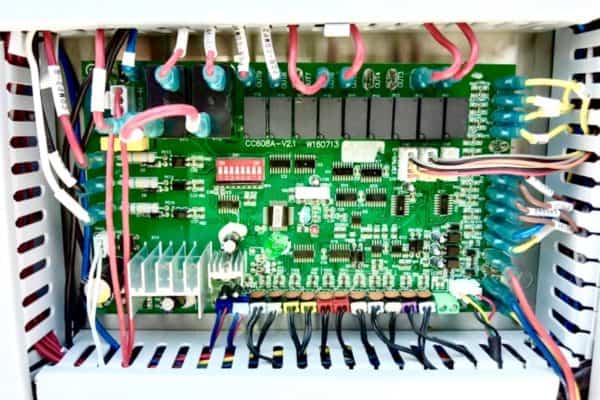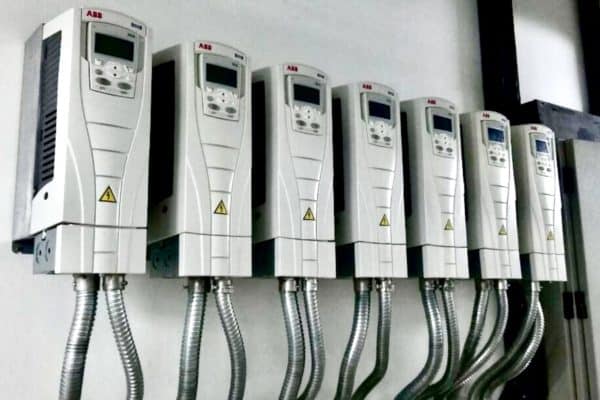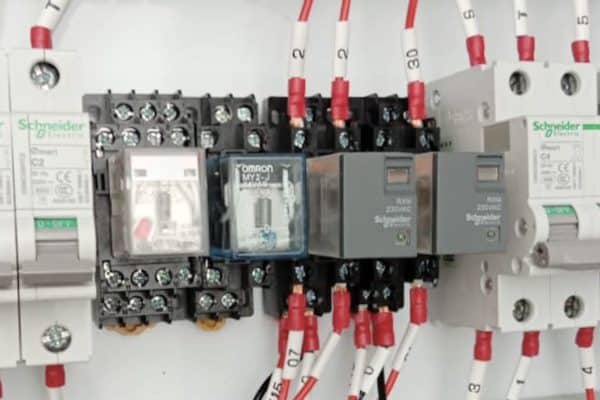What is PLC in HVAC? (CPU, Module, HMI, Analog & Digital)
Complex HVAC systems often use a PLC to control. Terms like CPU, module, HMI, AI/AO and DI/DO are common in PLC. I happened to work on a few HVAC projects with PLC. So, I decided to write a post about what is PLC in HVAC.
PLC stands for programmable logic controller. Generally, PLC is the core of the control system of the HVAC system. Usually, PLC is located inside the main switchboard of the chilled water system or a dedicated HVAC control panel.
Many people are having a hard time understanding PLC in HVAC. After all, we are not programmers or control experts. However, it is essential that we at least know the basics of PLC in HVAC.
HVAC PLC Hardware
If you ever deal with a PLC supplier, you’ll often hear them talk about the hardware. The hardware of PLC is crucial because it limits the complexity of the HVAC control system. If you ordered insufficient PLC hardware, the control system will not be able to support all the data.
CPU
CPU or central processing unit is like the heart of the PLC system. It is usually the biggest piece of PLC hardware. PLC technicians and engineers will install the control program in the CPU. The CPU is what processes the entire HVAC control system.
If you look at brochures of PLC suppliers, what you see are usually CPU models. They come in different specifications but mainly depend on how many modules you need thereby depending on how many data points you need.
However, you don’t need to select the CPU model by yourself unless you are really good at it. PLC suppliers will do the work for you based on your needs. So, you need to make sure that you provide the correct numbers of data points as well as allow spares in case you want to add something in the future.
In the meantime, I would like to inform you that you can learn quicker by getting my HVAC Begin (eBook) if you’re a beginner. But, if you have a year or two of experience, then I would suggest you consider my HVAC Basics (eBook). Nonetheless, I encourage you enroll in my HVAC Beginner Course: 10 Days to Become Competent in HVAC if you want to equipped yourself with a complete set of basic HVAC skills.
HVAC Beginner Course
Learn the most basics and foundational HVAC skills including cooling capacity calculation, equipment selection, duct sizing, pipe sizing, exhaust fan sizing, controls, electrical and more.
Module
A module is an essential piece of PLC hardware that receives or gives signals to HVAC equipment. An HVAC PLC usually has multiple modules. Without a module, there will be no signals given to the CPU to process and control.
There are two types of modules; a) analog module and b) digital module. Each type of module has two functions; a) input and b) output. So, there are a total of 4 kinds of modules which are for analog input (AI), analog output (AO), digital input (DI) and digital output (DO).
In the world of PLC, input is the signals going into the PLC and output is the signals coming out from the PLC. Many people often get confused and think that input is the signals going into the HVAC equipment which is not true for PLC suppliers. So, we must speak the “PLC language” to communicate better.
It may sound controversial but analog input/output is actually greater than digital input/output because digital input/output is only able to receive 0 or 1 which can be viewed as on or off. On the other hand, analog input/output is able to receive signals such as 0-10V and 4-20mA.
For instance, RTD temperature sensors, modulating valves and flow meters all go into the analog input/output modules. The digital input/output modules are usually connected to relays that either turn on/off only.
Modules are specified by the numbers of channels such as 16CH, 8CH and 4CH (16 channels, 8 channels and 4 channels). For example, a 4CH AI module is capable of receiving signals from 4 different RTD temperature sensors. So, if you only have 4 signals, you don’t need to use a 16CH module. But, you may use an 8CH module and leave 4 spares. Needless to say, the higher the number of channels, the more expensive the module.
HMI
HMI stands for human-machine interface. Basically, it is the PLC display you see on the HVAC control panel that allows you to navigate and do settings for the HVAC system. It is also where you can insert a Pendrive or sim card to download the logged data.
HMIs also come in different specifications but they are mainly based on the size of the display. Generally, the bigger the HMI display, the more functions the HMI has and thus, the more expensive it gets.
Most PLC suppliers have storage of icons, graphics and symbols to be used for their PLC HMIs. They have graphics of chiller, cooling tower, AHU and FCU. So, if you care about the graphics, you may ask them to redesign the graphics.
Nowadays, many PLC suppliers suggest a PLC control system with only the HMI, without the CPU and modules, for small HVAC systems. The HMI combines the CPU, modules and displays altogether. It is a much simpler form of PLC for simple HVAC controls.
Power Supply
Power supply includes a 3-pin power socket, MCBs, fuses and transformers to supply power to the CPU, modules, HMIs and other components. The 3-pin power socket is optional because it is to be used by PLC technicians to charge their laptops when troubleshooting at the site. Fuses are particularly important to protect sensitive CPUs and modules.
Relays
Relays are used to provide digital input/output to the PLC modules. Usually, it is best to be supplied and included by the PLC supplier. However, relays are universal. Hence, you can install them separately in other panels.
Metal Casing
Some PLC suppliers offer the entire PLC system including the control panel or metal casing. The metal casing also includes the necessary mounting racks and ventilation fans inside. Nevertheless, you can install the PLC hardware inside any panel as long as you make sure there are no signal interferences.
HVAC PLC Input/Output
As mentioned earlier, there are 4 kinds of PLC modules; a) analog input, b) analog output, c) digital input and d) digital output. Here are some of the common signals in respect of their PLC modules:
| Digital Input | Digital Output | Analog Input | Analog Output |
|---|---|---|---|
| Heat Pump Run Status | Heat Pump Run Command | Flow Meter Readings | Modulating Valve Control |
| Heat Pump Trip Alarm | Water Pump Run Command | RTD Sensor Readings | |
| Panel Selector Switch | On/Off Valve Open Command | ||
| Water Pump Run Status | |||
| On/Off Valve Position |
As you can see, many signals actually fall into the digital input (DI) module. Analog modules are usually for a range of operations and more complicated control devices such as flow meters and modulating valves.
In addition, some analog inputs can be simplified to digital inputs if the design allowed. For example, RTD temperature sensors allow the HMI to display the actual temperature reading. If you only need to trip the chiller when the water temperature is too low, you can use a different temperature sensor and connect it to a relay and thus, to the digital input module.
Most of the time, digital input/output requires relays to work while analog input/output can be directly connected to the respective PLC modules. Relays signal is often known as the dry contact signal. I’ve covered the different types of HVAC controls in my previous blog post which you can check out after this.
So, the more digital input/output you have, the more expensive the PLC system gets because of the additional relays, internal wiring work and bigger panel. Nevertheless, the total cost of the PLC system still heavily depends on the number of data points.
Lastly, consider my HVAC Begin (eBook) if you’re a beginner and you want to have a foundational knowledge in HVAC. But, if you have a year or two of experience, then I would suggest you consider my HVAC Basics (eBook). Nonetheless, I encourage you enroll in my HVAC Beginner Course: 10 Days to Become Competent in HVAC if you want to equipped yourself with a complete set of basic HVAC skills.
HVAC Beginner Course
Learn the most basics and foundational HVAC skills including cooling capacity calculation, equipment selection, duct sizing, pipe sizing, exhaust fan sizing, controls, electrical and more.
If you have anything to add (or ask) about this topic, leave a comment down below!








